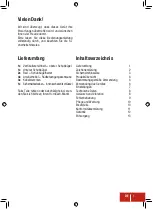
Table 8 — LID Primary and Secondary Messages and Custom Alarm/Alert Messages
with Troubleshooting Guides (cont)
E. NORMAL OR AUTO.-RESTART
PRIMARY MESSAGE
SECONDARY MESSAGE
PROBABLE CAUSE/REMEDY
STARTUP IN PROGRESS
OCCUPIED MODE
Machine starting. Time schedule is occupied.
STARTUP IN PROGRESS
REMOTE CONTACT CLOSED
Machine starting. Remote contacts are closed.
STARTUP IN PROGRESS
START COMMAND IN EFFECT
Machine starting. Chiller START/STOP on Status01 manually forced
to start.
AUTORESTART IN PROGRESS
OCCUPIED MODE
Machine starting. Time schedule is occupied.
AUTORESTART IN PROGRESS
REMOTE CONTACT CLOSED
Machine starting. Remote contacts are closed.
AUTORESTART IN PROGRESS
START COMMAND IN EFFECT
Machine starting. Chiller START/STOP on Status01 manually forced
to start.
F. START-UP FAILURES: This is an alarm condition. A manual reset is required to clear.
PRIMARY MESSAGE
SECONDARY MESSAGE
ALARM MESSAGE/PRIMARY CAUSE
ADDITIONAL CAUSE/REMEDY
FAILURE TO START
LOW OIL PRESSURE
OILPD [VALUE] exceeded limit of [LIMIT]*. Check
oil pump system.
Check for closed oil supply valves. Check oil filter.
Check for low oil temperature. Check transducer
accuracy.
FAILURE TO START
OIL PRESS SENSOR FAULT
OILPD [VALUE] exceeded limit of [LIMIT]*. Check
oil pressure sensor.
Check for excessive refrigerant in oil sump. Run oil
pump manually for 5 minutes. For hermetic com-
pressors, check both oil pressure and cooler pres-
sure. For open-drive units, check calibration of oil
pressure differential amplifier modules. Check wir-
ing. Replace transducers if necessary.
FAILURE TO START
LOW CHILLED WATER FLOW
EVFL Evap Flow Fault: Check water pump/flow
switch.
Check wiring to flow switch. Check through Control
Test for proper switch operation.
FAILURE TO START
LOW CONDENSER
WATER FLOW
CDFL Cond. Flow Fault: Check water pump/flow
switch.
Check wiring to flow switch. Check through Control
Test for proper switch operation.
FAILURE TO START
STARTER FAULT
STR
FLT Starter Fault: Check Starter for Fault
Source.
A starter protective device has faulted. Check starter
for ground fault, voltage trip, temperature trip, etc.
FAILURE TO START
STARTER OVERLOAD TRIP
STR
FLT Starter Overload Trip: Check amps
calibration/reset overload.
Reset overloads, check ICR relay before restarting
machine.
FAILURE TO START
LINE VOLTAGE DROPOUT
V
P Single-Cycle Dropout Detected: Check volt-
age supply.
Check voltage supply. Check transformers for sup-
ply. Check with utility if voltage supply is erratic. Moni-
tor must be installed to confirm consistent, single-
cycle dropouts. Check low oil pressure switch.
FAILURE TO START
HIGH CONDENSER
PRESSURE
High Condenser Pressure [LIMIT]:* Check switch
2C aux, and water temperature/flow.
Check for proper design condenser flow and tem-
perature. Check condenser approach. Check 2C aux-
iliary contacts on oil sump starter. Check high pres-
sure switch.
FAILURE TO START
EXCESS ACCELERATION
TIME
CA
P Excess Acceleration: Check guide vane clo-
sure at start-up.
Check that guide vanes are closed at start-up. Check
starter for proper operation. Reduce unit pressure
if possible.
FAILURE TO START
STARTER TRANSITION
FAULT
RUN
AUX Starter Transition Fault: Check 1CR/
1M/Interlock mechanism.
Check starter for proper operation.
Run contact failed to close.
FAILURE TO START
1CR AUX CONTACT FAULT
1CR
AUX Starter Contact Fault: Check 1CR/1M
aux. contacts.
Check starter for proper operation.
Start contact failed to close.
FAILURE TO START
MOTOR AMPS NOT SENSED
CA
P Motor Amps Not Sensed: Check motor load
signal.
Check for proper motor amps signal to SMM. Check
wiring from SMM to current transformer. Check main
motor circuit breaker for trip.
FAILURE TO START
CHECK REFRIGERANT TYPE
Current Refrigerant Properties Abnormal — Check
Selection of refrigerant type
Pressures at transducers indicate another refriger-
ant type in Control Test. Make sure to access the
ATTACH TO NETWORK DEVICE table after speci-
fying HFC-134a refrigerant type.
FAILURE TO START
LOW OIL PRESSURE
Low Oil Pressure [LIMIT]:* Check oil pressure switch/
pump and 2C aux.
The oil pressure differential switch is open when the
compressor tried to START. Check the switch for
proper operation. Also, check the oil pump interlock
(2C aux) in the power panel and the high con-
denser pressure switch.
*[LIMIT] is shown on the LID as the temperature, pressure, voltage, etc., set point predefined or selected by the operator as an override, alert, or alarm condition. [VALUE]
is the actual pressure, temperature, voltage, etc., at which the control tripped.
87
Summary of Contents for 17
Page 13: ...Fig 6 Open Drive 17 Series Lubrication Cycle 13 ...
Page 15: ...Fig 7 17EX Controls and Sensor Locations 15 ...
Page 16: ...Fig 7 17EX Controls and Sensor Locations cont 16 ...
Page 17: ...Fig 7 17EX Controls and Sensor Locations cont 17 ...
Page 19: ...Fig 8 19EX Controls and Sensor Locations cont 19 ...
Page 23: ...Fig 16 17 19EX LID Menu Structure 23 ...
Page 24: ...Fig 17 17 19EX Service Menu Structure 24 ...
















































